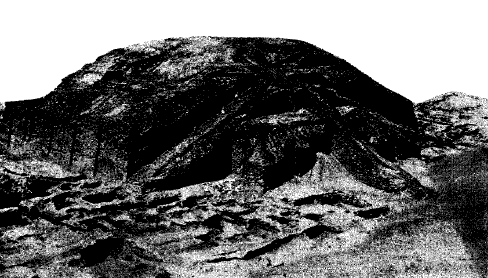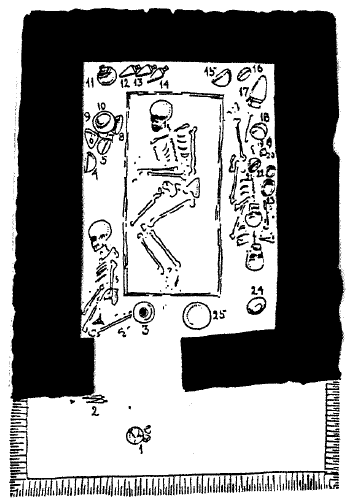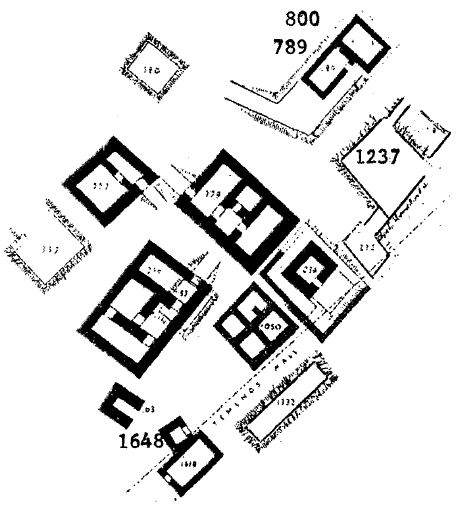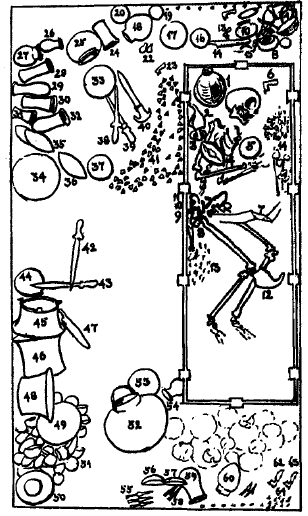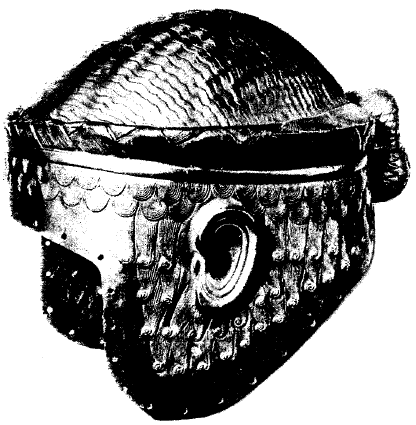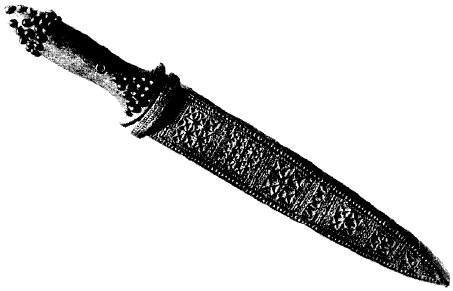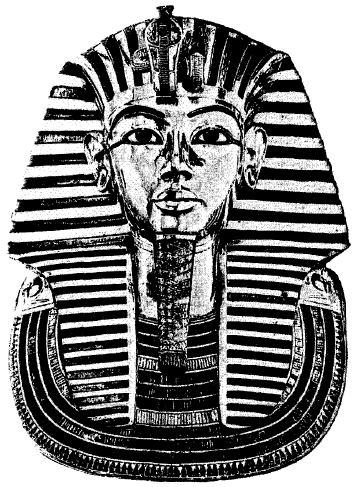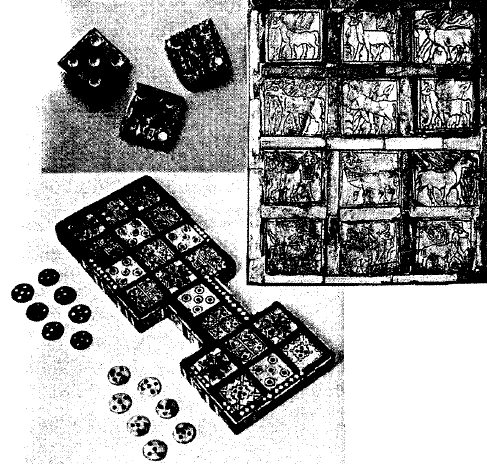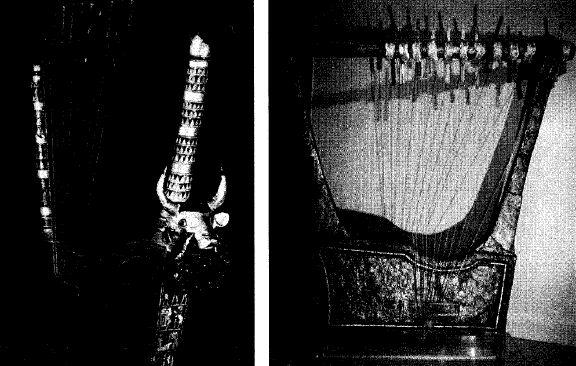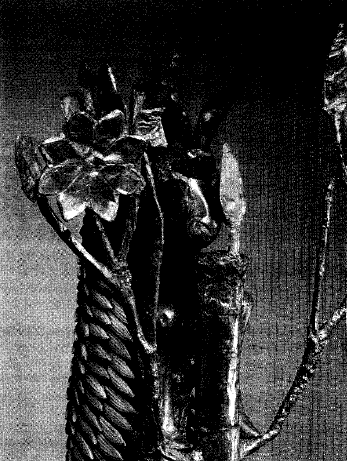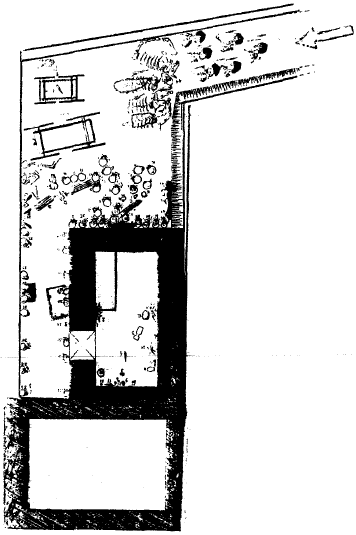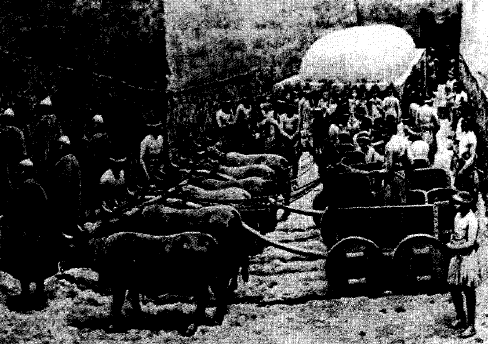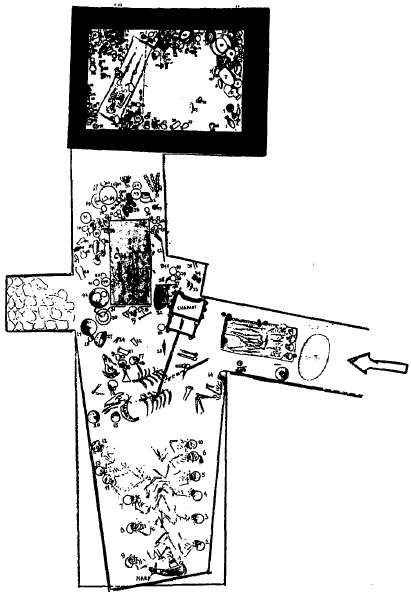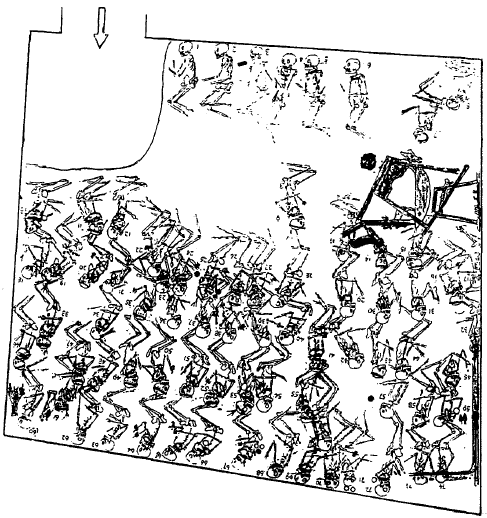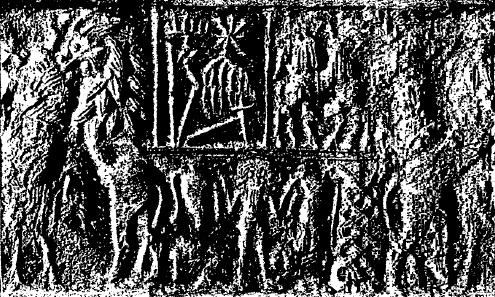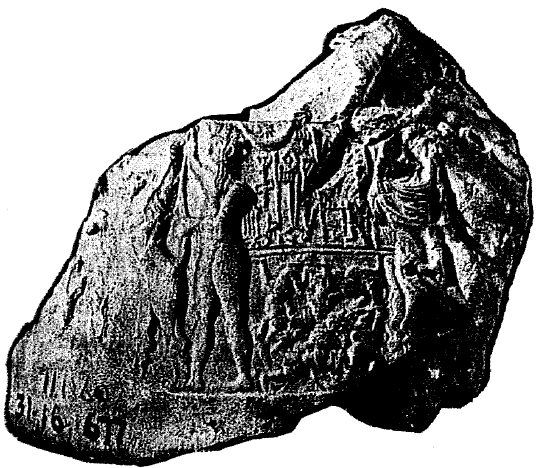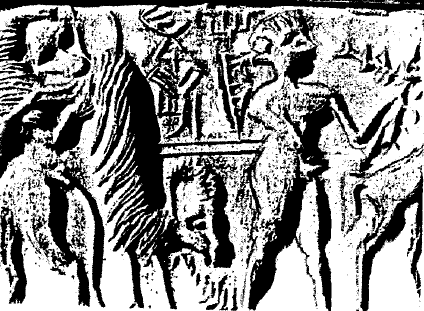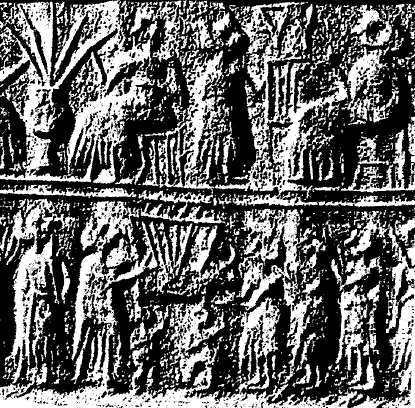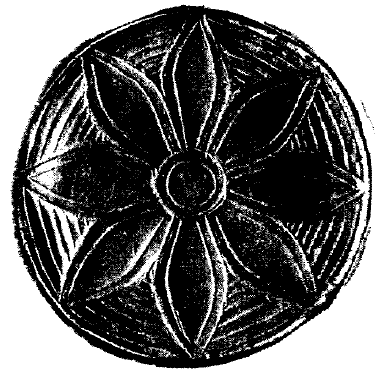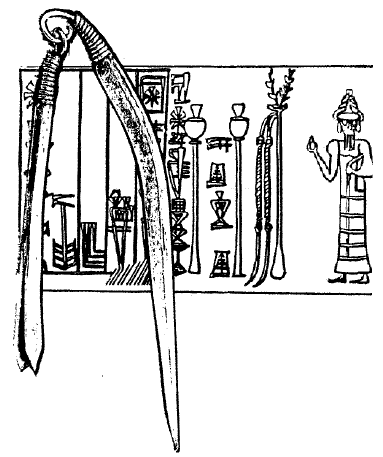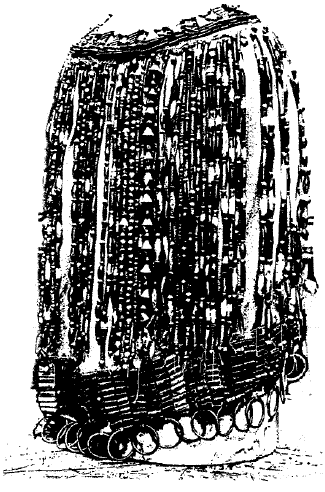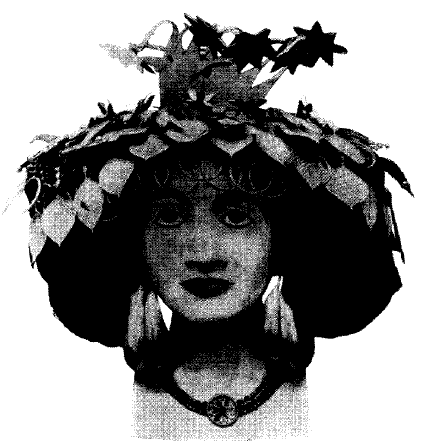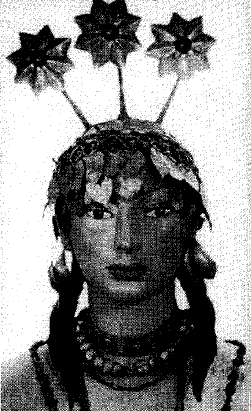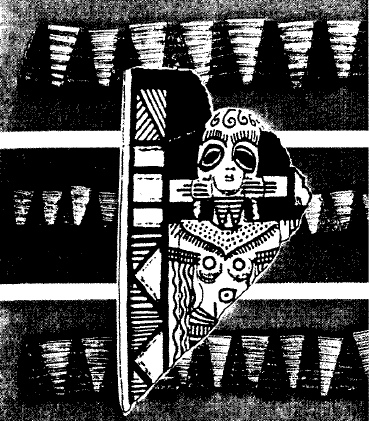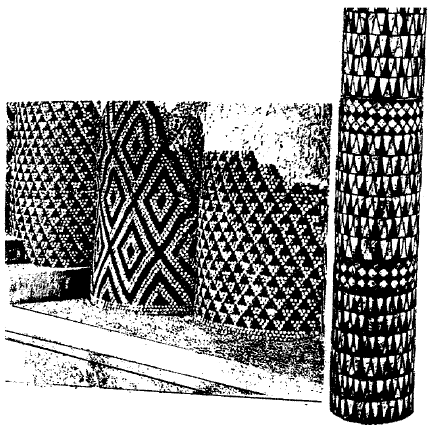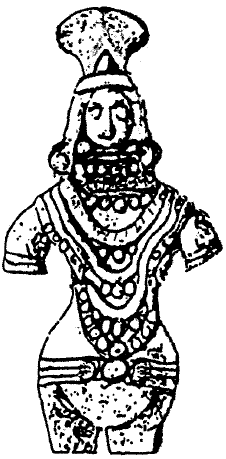|
Attracted by the imposing remains of a ziggurat that stood out in the desert plain (Fig. Ill), he chose to start excavating at the adjoining site locally called Tell el-Muqayyar. As ancient walls, artifacts, and inscribed clay tablets were unearthed, he realized that he was digging up ancient Ur - Ur of the Chaldees.
Digging at its edge, Woolley made the find of the
century: A cemetery, thousands of years old, that included unique
‘royal’ tombs.
The excavations in the residential sections of the city established
that Ur’s inhabitants followed the Sumerian custom of burying their
dead right under the floors of their dwellings, where families continued
to live.
They were concentrated within the area of the sacred precinct and ranged in age from pre-dynastic times (before Kingship began) through Seleucid times. There were burials on top of burials, intrusions of graves into others, even instances of apparent reinterments in the same graves. In some instances, Woolley’s workers dug huge trenches going down almost fifty feet, to cut through the layers and better date graves.
Woolley assumed that these different ‘inhumations’ were accorded on the basis of some social or religious status. But then, in the southeastern edge of the sacred precinct - within the walled area - Woolley discovered a group of entirely different burials, some 660 of them.
In them, with sixteen exceptions, the bodies were wrapped in reed matting as a kind of a shroud, or placed in wooden coffins - an even greater distinction, for wood was in short supply and quite expensive in Sumer. Each one of those dead persons was then laid to rest at the bottom of a deep rectangular pit, large enough to hold them.
The people thus buried, both male and female, were invariably placed on their sides - not on their backs as in the common burials; their arms and hands were flexed in front of their chests, their legs were slightly bent (Fig. 112).
Figure 112
Laid out beside the bodies or on them were various personal belongings - jewelry, a cylinder seal, a cup or bowl; these objects enabled dating these graves to the Early Dynastic Period, roughly from circa 2650 B.C. to 2350 B.C.; it was the period in which central kingship was in Ur, starting with Ur’s First Dynasty ("Ur I"), when Kingship was transferred thereto from Uruk.
They were entirely unique - unique not
only in Sumer, but throughout Mesopotamia, throughout the whole
ancient Near East; unique not only for their period, but for all
periods.
Figure 113
Cylinder seals in which names were combined with the titles Nin and Lugal convinced Woolley that he had discovered the Royal Tombs of Ur.
But if one accepts the reality of the gods, the goddesses, and the demigods - one is in for a thrilling adventure.
To those unique structural features was added one more: Some tombs were accessible via well-defined sloping ramps that led to a large area, a kind of forecourt, behind which the actual tomb chamber was located.
To all that was added the fact that the body was surrounded by objects of extraordinary opulence and excellence - in many instances, one- of-a-kind anywhere, any time.
Figure 114
The objects included a splendid golden helmet (Fig. 115), a superb golden dagger in a magnificently decorated silver sheath (Fig. 116), a silver belt, a gold ring, bowls and other utensils made of gold or silver, gold jewelry with or without decoration with lapis lazuli (the blue gemstone prized in Sumer), and a "bewildering variety" (to quote Woolley) of other metal artifacts made of electrum (a gold-silver alloy), copper, or copper alloys.
Figure 115
Figure 116
Objects of such artistry and metalworking techniques as the dagger and the helmet were absolutely unknown anywhere else.
If these observations bring to mind the opulent golden death mask and magnificent artifacts and sculptures found in the tomb of Egypt’s Pharaoh Tut-Ankh-Amen (Fig. 117), let it be remembered that he reigned circa 1350 B.C. - some twelve centuries later.
Figure 117
These included utensils of daily use, such as cups or tumblers - even a tube used for drinking beer - and all were made of pure gold; other cups, bowls, jugs, and libation vessels were made of pure silver; here and there, some vessels were made of the rare alabaster stone.
There were weapons - spearheads, daggers - and tools, including hoes and chisels, also made of gold; since gold, being a soft metal, deprived these implements of any practical use, those implements (usually made of bronze or other copper alloys) must have served only a ceremonial purpose, or were a status symbol.
Figure 118
Figure 119 Figure 120
There were other finds, such as a complex sculpture (nicknamed ‘The Ram in the Thicket’, Fig. 121), that did not emulate any object or tool but were art for art’s sake.
For them, the artisans again lavishly used gold and combinations of gold with precious stones.
Figure 121
In all of these objects, as in the ones mentioned earlier, the artistry and the techniques used to make and shape them - to create alloys, to combine materials, to weld them together - were unique, ingenious, and unmatched compared to any finds outside these tombs.
Above all there was the obviously abundant use of gold, even for the making of common objects (cups, pins) or tools (hoes, axes).
Who had access to all those rare riches, who at a time when household utensils were made of clay or at best of stone, used uncommon metals for common goods? And who wanted everything possible to be made of gold, even if it rendered them impractical to use?
Gold, it will be recalled, was the purpose of the Anunnaki’s coming to Earth - to be sent back to Nibiru. In so far as an early and lavish use of gold here on Earth and for common vessels is concerned, we find gold mentioned only in inscriptions relating to Anu’s and Antu’s state visit to Earth circa 4000 B.C.
A list of the variety of beers and wines that were to be served to Anu specified that the beverages had to be served in special Suppu (‘Liquid holding’) vessels made of gold; even the Tig.idu ('Mixing vessels’) in which food was prepared had to be of gold.
The vessels, according to those instructions, were to be decorated with a ‘rosette’ design to mark them as 'Belonging to Anu. Milk, however, was to be served in special alabaster stone vessels, not in metal ones.
A hymn to Enlil, it extols his golden hoe with which he broke ground for the Dur.an.ki, the Mission Control Center in Nippur:
Similarly, according to the text known as Enki and the World Order, his sister Ninharsag "has taken for herself the gold chisel and the silver hammer" - again utensils that, made of these soft metals, were only symbols of authority and status.
Though the precise nature of the instrument, which gave out "sweet music," is not certain, the Algar is mentioned in Sumerian texts as a musical instrument played exclusively for the gods; except that Inanna’s was made of pure silver.
But what was found in some of the other tombs surpassed anything ever found before or thereafter.
Presumably, the tomb was entered and looted by grave robbers in antiquity, which may account for the absence of the main body and precious objects.
Figure 122
But there were other bodies all over: Six companion’ bodies were lying in the access ramp; they wore copper helmets and carried spears, as soldiers or bodyguards would.
Down in the pit were remains of two wagons, each one drawn by three oxen whose skeletal remains were found in situ together with the bodies of one oxen-handler and two drivers per wagon.
While all that bespoke a military leader, the objects found near a smaller number of bodies identified as females bespoke appreciation of art and music:
An artist’s 1928 rendition of what the assemblage in the death pit might have looked like, before everyone there was drugged or killed to be buried in situ (Fig. 123), gives a chilling reality to the scene.
Figure 123
Here too he found accompanying bodies both in the ramp and in the pit (Fig. 124) - five bodies of guards, an oxcart with its grooms, and ten bodies presumably of female attendants who carried musical instruments.
But here there was a body lying on a bier, placed in a specially constructed burial chamber, where it was accompanied by three attendants. This chamber was not robbed in antiquity, probably because it was a secret sunken chamber: Its roof, rather than its floor, was on the same level as the floor of the pit.
Judging by the skeletal remains as well as by
the profusion of jewelry, ornaments, and even a large wooden chest
for clothing, it was the body of a female - the ‘Queen’, as Woolley
called her.
Figure 124
Gold, and gold in combination with lapis lazuli and other precious stones, dominated these finds; gold and silver were the metals of which objects in daily use were made (with rare alabaster stone sometimes used for bowls); so were various artfully sculpted objects, such as the heads of a bull and of a lion.
With a somewhat lesser opulence but similarly adorned were the female attendants who were buried with her: in addition to an elaborate golden headdress, each one was wearing golden earrings, chokers, necklaces, armbands, belts, finger rings, cuffs, bracelets, hair ornaments, wreaths, frontlets, and a variety of other adornments.
He unearthed the ramp and the pit, but did not find the burial chamber to which they must have belonged. He named the find "the Great Death Pit" because it contained seventy-three bodies of attendants (Fig. 125).
Figure 125
Based on the skeletal remains and the objects found on or near the bodies, only five of them were males, lying alongside a wagon.
Spread in the pit were sixty- eight female bodies; the objects found near them included an outstanding lyre (since known as the ‘Lyre of Ur’), the ‘Ram in the Thicket’ sculpture, and a bewildering variety of jewelry.
As in the other tombs, gold was the dominant material. (It was ascertained later that Woolley did find a burial chamber abutting PG-1237, but because the body in it was wrapped in reed matting, he considered it an intrusion from a later time and not the original burial.)
Some, as PG-1618 and PG-1648, held just a few bodies of what Woolley termed ‘retainers’; others held many more: PG-1050, for example, held forty bodies. One must assume that they were all entombments essentially similar to PG-789, PG-800 (and probably also PG-755); and that intrigued scholars and researchers from Woolley on, for these entombments had no parallel anywhere, nor were they mentioned in the vast literary trove of Mesopotamia - with one exception.
Missing lines deprive us of the link to the final 42 lines, from which it could be surmised that Gilgamesh was going to retain in Nether World the company of,
A line (line 7 in the fragment’s reverse side) that can be read to include the words "whoever lay with him in the Pure Place" or "When they had lain down with him in the Pure Place" is taken as an indication that The Death of Gilgamesh in fact describes an ‘accompanied burial’ - presumably an extraordinary privilege granted to Gilgamesh, who was "two-thirds of him divine," as compensation for not gaining the immortality of the gods.
While this explanation of the legible lines remains debatable, there is no escaping the uncanny similarity between the Death of Gilgamesh text and the stunning reality uncovered at Ur.
In Egypt, the Afterlife’ notion included objects but not a host of co-buried attendants; the great Pharaohs were buried (amid an opulence of accompanying objects) in tombs hidden deep underground - lying by themselves in complete isolation.
In the Far East, the buried Chinese emperor Qin Shihuang (circa 200 B.C.) was accompanied by an army of his subjects - but they were all made of clay. And though from A.D. times and on the other side of the world, we might as well mention a recent find in Sipan, Peru, of a royal tomb in which four bodies accompanied the deceased.
But the abundant use of gold, the extraordinary artistic and technologically advanced aspects of the objects, and other features that we have pointed out, lead us to conclude that demigods, and even gods, were buried there; and this finding is boosted by the discovery of inscribed cylinder seals.
All depicted some scene; some were inscribed with names or titles, identifying them as personal seals. If a name-bearing seal was found on or beside a body, it was logical to assume that it belonged to that person; and that could tell us a lot.
The assumption has also been that the loose ‘SIS’ seals came from tombs that had been entered and looted in antiquity, the looters keeping valued objects and discarding ‘valueless’ pieces of stone; to modern researchers, even the SIS seals are invaluable; and we will use them as clues to be followed in unraveling the biggest mystery of the Royal Tombs: Who was buried in PG-800.
Though these seals left their owner’s identities unknown, they did suggest that the owners were males with heroic attributes - an aspect that becomes evident from the third such seal, in which a wild man - or a man in the wilderness - was added to the depicted scene. It was found in PG-261, which Woolley described as a "simple inhumation that had been plundered."
And this seal had its owners name inscribed on it in clearly legible script (Fig. 126): LugalAn.zu Mushen.
Figure 126
In his report Woolley did not dwell on this cylinder seal, though it plainly identified it as the tomb of a king.
Subsequent scholars have also ignored it because since Lugal meant ‘king’ and Mushen meant ‘bird’, the inscription makes little sense when read "King Anzu, Bird."
The inscription, however, becomes highly significant if it is read - as I suggest - "King/Anzu Bird," for it will then suggest that the seal belonged to the King of ‘Anzu bird’fame - it would identify the owner as Lugalbanda, whose way to Aratta, the reader will recall, was blocked at a vital mountain pass by the monster Anzu mushen (‘Anzu the Bird’).
Challenged to identify himself, that is what Lugalbanda answered:
Could the demigod Lugalbanda - a son of Inanna, spouse of the goddess Ninsun, and the father of Gilgamesh - be the VIP who was buried in the violated and plundered tomb PG-261?
We do know who owned them, because among the artifacts inside the coffin two gold bowls, one actually held by the hands of the buried occupant, were inscribed with the name Mes.kalam.dug - the name, no doubt, of the buried person. His name, with the prefix Mes (= ‘Hero’), as explained by us earlier, meant ‘Demigod’.
Not ‘deified’ as Lugalbanda and Gilgamesh were, his name does not appear in the God Lists (in fact, the only instance throughout the God Lists of a name that begins with Mes - a partly legible name that reads Mes.gar.?.ra - is found among the sons of Lugalbanda and Ninsun).
But Mes.kalam.dug (= ‘Hero who the Land held’) is not a complete unknown: We know that he was a king from a cylinder seal bearing the inscription Mes.kalam.dugLugal (‘Meskalamdug, king’) that was found in the SIS soil.
As stated in a British Museum text that we have quoted earlier, his "divine seed giver" was Nannar/Sin himself. Being only a demigod meant that his mother was not Nannar’s official spouse, the goddess Ningal; but his genealogy still made him a half-brother of Utu and Inanna.
Figure 127
Our guess is that Nin.banda-Nin, was the mother of Meskalamdug, and Mes.anne.pada was his father; and we further suggest that the discovery of their seals in the SIS soil undoubtedly means that they too were buried in the ‘Royal Tombs’ group, in tombs that had been entered and robbed in antiquity.
Nin.banda was not a ‘queen, even if her spouse was a king; she was a NIN, a goddess; as the inscription doubly stated, she was "Nin.banda, Nin" - confirming that Mes.anne.pada was her husband, and leading to the conclusion that the VIP entombed in PG-755 - Mes.kalam.dug - was the son of that goddess + demigod couple who started the First Dynasty of Ur.
The firstborn son, Mes.kalam.dug, is not included in the ‘Ur I’ list; his title Lugal suggests that he reigned elsewhere - in the family’s ancestral city Kish.
Not only the discarded cylinder seals listed above, but also a damaged seal imprint (with the familiar heroic scene, Fig. 128) found in the SIS soil bearing the name Mes.anne.pada, founder of the dynasty, suggest that ancient robbers found his grave, robbed it, and threw away (or dropped) the seal that was with the body. Which grave?
There are enough unidentified tombs to choose from.
Was there a connection between Lugal.banda (‘Banda the king’) and Nin.banda (‘The Goddess Banda’)? If Lugal.banda, as we have suggested, was buried in Ur, as were Nin.banda’s spouse, Mes.anne.pada, and three sons - what happened to her? Did she, with her Anunnaki longevity, need no burial - or did she herself, at some point, die and was also buried in this cemetery.
We know nothing of him except that he was a king; but that fact alone is significant, because the seal was found next to his body in the pit of PG-800, where he was one of the male attendants.
Depicting him naked would be in line with earlier instances in which a naked Lu.Gal served a female deity (see, for example, Fig. 77).
Figure 129
That the latter is the case is additionally suggested by another find, near the wardrobe chest in PG-800, of a seal bearing the identification A.bara.ge, which can be translated ‘The Water Purifier of the Sanctuary’ - the personal seal of an officeholder who, as the deity’s cupbearer, was the deceased’s most trusted personal aide.
Depicting females banqueting and having beer with drinking straws while musicians are playing (Fig. 130), it belonged to a female courtier and was inscribed Dumu Kisal - ‘Daughter of the Sacred Forecourt’.
Figure 130
This too was a title of no small import, for it linked the title of its holder to a subsequent king named Lugal.kisal.si (= ‘The Righteous King of the Sacred Forecourt’), indicating her royal-priestly genealogy.
He also viewed the ‘King’s’ PG-789 and the ‘Queen’s’ PG-800 - which sat right against each other - as a special unit, similar in their having the sloping ramp, the bier or coffin carrying wagon, the death pit filled with attendants who themselves were high ranking, and the special separate Tomb Chamber constructed as an underground stone building.
And that leads us to the greatest enigma of the Royal Tombs of Ur - the identity of the female who was laid to rest in PG-800.
We have already described some of the golden abundance in PG-800 (which was not robbed in antiquity), extending to the fashioning out of gold even of utensils in daily use - a bowl, a cup, a tumbler - and we noted the similarity of such use to the specifications for Anu and Antu’s stay in Uruk some two thousand years earlier.
Figure 131
This could be possible if the utensils found in Ur were the very same ones from Anu’s visit at Uruk, somehow preserved for two millennia as a family heirloom - in this case a feat linked to Inanna, to whom Anu bequeathed the E.Anna temple in Uruk with all in it.
If the utensils were made afresh in Ur, then the VIP for whom they were made had to be entitled to display Anu’s symbol. Who could that be, other than someone directly belonging to Anu’s dynastic family?
But we find an identical object depicted on a cylinder seal that (according to its inscription) belonged to a Sumerian A.zu, a physician. We show the ‘tweezers’ from PG-800 superimposed on the cylinder seal (Fig. 132) to support the conclusion that it was a medical instrument.
Figure 132
We don’t know whether this symbolic emulation in soft gold indicated the profession of the deceased or was also an inherited family heirloom; in either case, it suggests that the goddess in PG-800 had links to a medical tradition.
Figure 133
As already mentioned, there was a large ‘wardrobe chest’ outside the tomb chamber, indicating that the ‘queen’ had ample clothing.
Yet from the neck down the naked body was bedecked not with a garment but with long strings of beads - sixty of them - made of gold combined in artistic designs with lapis lazuli and carnelian beads. The strings of beads formed a ‘cape’ that was held in place at the waist by a belt made of golden strings decorated with the same gemstones.
There were gold rings on each of her ten fingers, and a golden garter that matched the belt was worn on her right leg. Nearby, on a collapsed shelf, lay a diadem of gold and lapis lazuli adorned with rows of miniaturized animals, flowers, and fruits, all made of gold. Even the pins were artfully made of gold.
It was found crushed by fallen soil and was restored and
placed by experts on a model’s head (Fig. 134); it has since been
among the best known and most exhibited objects from the Royal Tombs
of Ur.
Figure 134
That too was my reaction the first time I saw it; but having become familiar with it and where it was found, it seemed odd that the only way to fit it on the head of a mannequin (made to resemble female heads found at Sumerian sites) was by artificially giving the mannequin an immense coif of stiff hair.
The weighty headdress was held in place with golden pins and golden ribbons; matching its design and size were huge golden earrings adorned with precious stones.
So either the 'queen' wore a headdress that was not
hers - or she had an unusually large head.
The choker had at its center a golden rosette (the emblem of Anu); the collar bore a design that consisted of a series of alternating triangles, one of gold, the other of lapis lazuli (Fig. 136, top row); chokers or collars with the same design were also found worn by some of the female attendants in PG-1237 (bottom rows).
Figure 136
This is highly significant, for in some of her depictions the goddess Inanna/Ishtar (superimposed image) was shown wearing the exact same collar!
The exact same design was also deployed at the entranceway and on ceremonial columns (Fig. 137) in the earliest Ninmah/Ninharsag temples. Apparently reserved for female deities, this ‘cult design’ (as scholars call it) suggests some kind of affiliation between the several goddesses involved.
Figure 137
The profuse use of lapis lazuli and carnelian requires reminding that the nearest source for lapis lazuli was Elam (nowadays Iran), and carnelian was found farther east, in the Indus valley.
As told in the Enmerkar and the Lord of Aratta text, it was to adorn Inanna’s abode in Uruk that the Sumerian king demanded from Aratta tribute of carnelian and lapis lazuli.
So it is not without significance that one of the few art objects found in the ruins of the Indus Valley centers, a statuette of Aratta’s goddess - Inanna - depicts her naked and bedecked only with strands and necklaces of beads and golden pendants, held in place by a belt with a disc-emblem (Fig. 138).
Figure 138
The striking similarities to the ‘queen’ in PG-800 with her beaded cape and belt do not end there: the statue’s towering headdress with its large earrings looks as though an artist tried to emulate in clay the headdress in PG-800.
It could have, were it not for the fact that Inanna/Ishtar was alive centuries later, when the Evil Wind overwhelmed Sumer; we know that because she and her hurried escape are clearly described in the Lamentation Texts. And she was also active many centuries later - into Babylonian and Assyrian times, in the 1st millennium B.C.
The notion of gods (or even demigods) as immortals has come to us from Greece; the discovery of Canaanite ‘myths’ at their capital Ugarit (on Syria’s Mediterranean coast) showed where the Greeks got the idea.
Indeed, the very arrival of Ninmah the doctor and her group of nurses admits illness among the Anunnaki. The deposed Alalu, swallowing Anu’s ‘Manhood’, died of poisoning. The evil Zu was captured and executed.
Inanna herself, going uninvited to her sister’s Lower World domain, was put there to death - "a corpse, hung from a stake." Two android rescuers retrieved her body and with a ‘Pulser’ and an ‘Emitter’ brought her back to life.
The great goddess Bau of Lagash refused to leave her people, and the Day of the Calamity was her last day:
In the Babylonian version of Enuma elish - that was read publicly during the New Year festival - a god named Kingu (namesake of the leader of Tiamat’s host) is killed to obtain blood for Man’s creation.
The question is,
|
